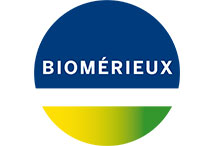Glossary of Terms used in the Microorganism Library
Species name: Name of the bacterial or fungal species identified with a high degree of probability by Vitek Express
bioMérieux BIOBALL: a small water-soluble ball containing a precise number of microorganisms delivering unprecedented accuracy and precision for quantitative microbiological quality control. BIOBALL is easy to use and requires no preparation or pre-incubation and is an accredited reference material under ISO Guide 34 standards. See https://www.biomerieux-industry.com/products/bioball-standardized-strains
ATCC/NCTC/NCPF/DSM/NBRC: American Type Culture Collection. National Collection of Type Cultures (NCTC) and National Collection of Pathogenic Fungi (NCPF) are two of four culture collections of Public Health England. DSM strains come from DSMZ-German Collection of Microorganisms and Cell Cultures GmbH. NITE Biological Resource Center (NBRC) is a repository of cultures based Japan.
Species description: The cellular morphology, size and staining characteristics of the species or genera.
Biochemical characteristics: The physiological requirements and major patterns of substrate utilization, biochemical reactions, and diagnostic tools associated with the identification of different species or genera.
Colony morphology and color on standard microbiological media: Shape, pattern of growth, size, pH reaction, pigment formation, and color of the colonies growing on standard microbiological media.
Type strain: A type strain is defined in the International Code of Nomenclature of Bacteria as the nomenclatural type of the species, and is the reference point to which all other strains are compared to know whether they belong to that species.
The type strain is listed in major national culture collections such as the American Type Culture Collection (ATCC).
Sequence accession no.(16S rRNA sequence): An accession number in bioinformatics is a unique identifier given to a DNA or protein sequence record to allow for tracking of different versions of that sequence record and the associated sequence over time in a single data repository.
Origin: The likely ecological origin of the species in terms of water, soil, plants, or animals. Emphasis is given to the location of human origin of the species or genera.
Pathogenicity: Pathogenicity refers to the ability of an organism to cause a human disease (i.e., harm the host). This ability represents a genetic component of the pathogen and the overt damage done to the host is a property of the host-pathogen interactions. Commensals and opportunistic pathogens usually lack this inherent ability to cause disease but may result in infection.
Susceptible patient populations:Human populations more prone to infection by frank and opportunistic pathogens due to their age and/or medical condition. These populations include newborns, infants, the elderly, the immune-compromised, those with underlying diseases, and cancer, organ transplant and surgical patients.
Clinical reports and infection outbreaks:Reports in the peer-reviewed clinical microbiology literature. Infection outbreak reports from the U.S. Federal Center for Disease Protection and Control (CDC) and the Food and Drug Administration (FDA).
Recall frequency:Summaries of recall frequencies from regulatory agencies like the FDA. Recent recalls can be monitored on the FDA website www.fda.gov.
Objectionable microorganisms by pharmaceutical dosage form:As defined in the PDA Technical Report No. 67 Exclusion of Objectionable Microorganisms from Non-sterile Pharmaceutical and OTC Drug Products, Medical Devices and Cosmetics.
Disinfectant resistance:Information about disinfectants and their mode of action can be found in the secondary literature such as Disinfection, sterilization, and preservation, edited Block S. S. (Lea & Febiger, Philadelphia, Pa), 4th edition and the 2008 CDC Guideline for Disinfection and Sterilization in Healthcare Facilities.
Heat resistance: Vegetative bacteria, yeast and mold are quite susceptible to desiccation, moist and dry heat. Fungal spores are more resistant while bacterial spores are the most resistant to moist and dry heat. See the ICMSF publication Microorganisms in Foods 5: Characteristics of Microbial Pathogens.
Antibiotic susceptibility: Antibiotic susceptibility is stated as the highest dilution or lowest concentration of antibiotic that completely inhibits growth in an in vitro test. Emergent resistance to antibiotics is common. See Manual of Clinical Microbiology. 10th ed. Washington DC: ASM Press; 2011.
Disclaimer: bioMérieux provides the information in this database, originally compiled by the expert pharmaceutical microbiologist Tony Cundell, Ph. D., as service to the customer to be used in conjunction with the microbial identification. The company reminds customers that the information is not definitive and according to pharmaceutical good manufacturing practices it is their responsibility to ensure the purity, quality and safety of your products and exclude objectionable microorganisms from the products.

